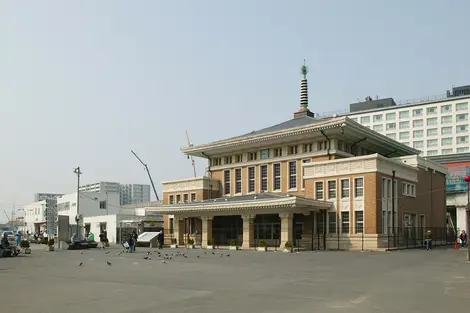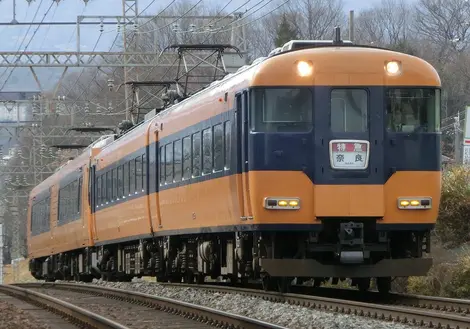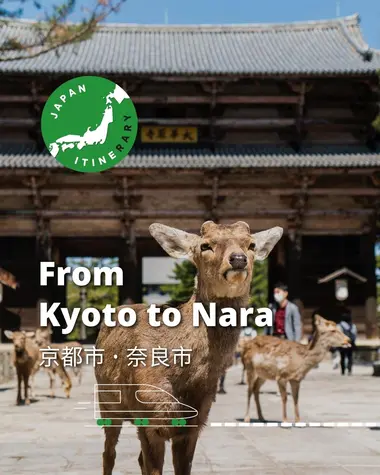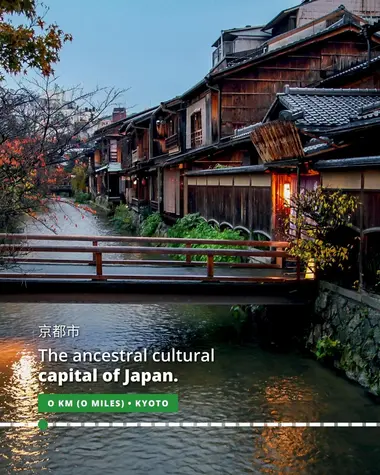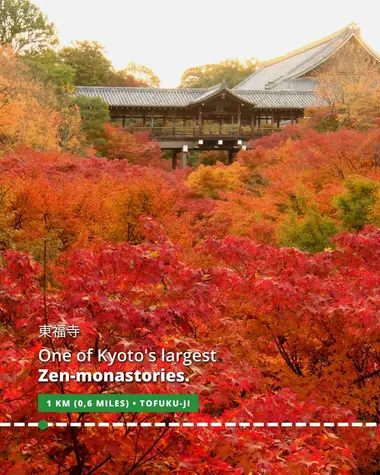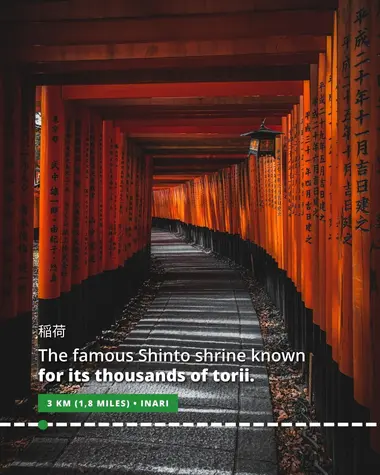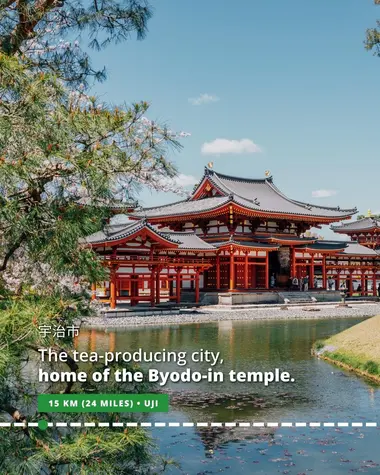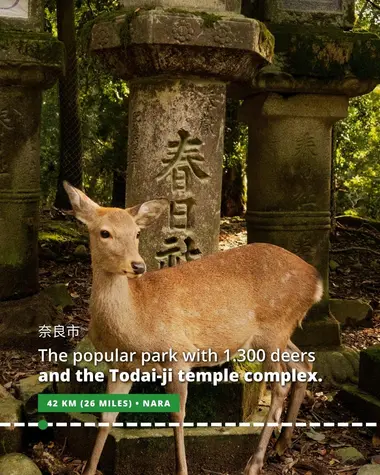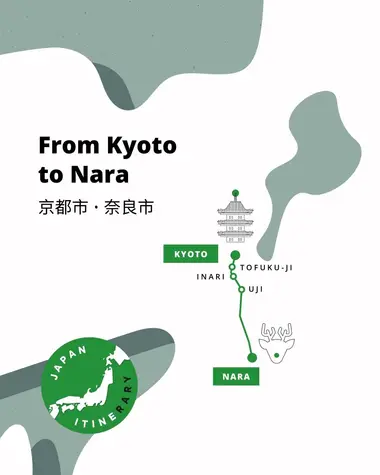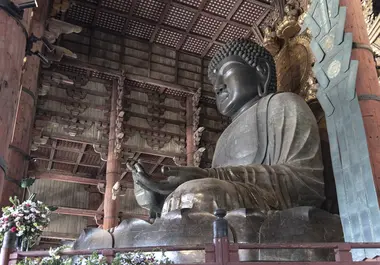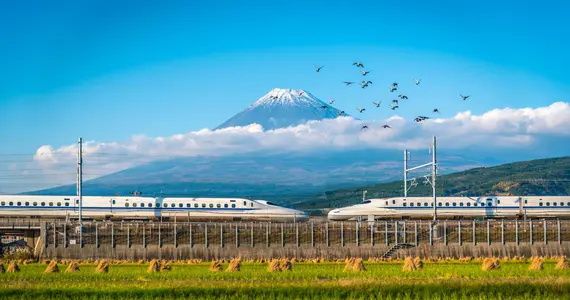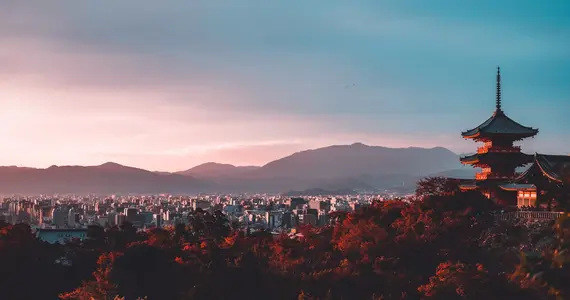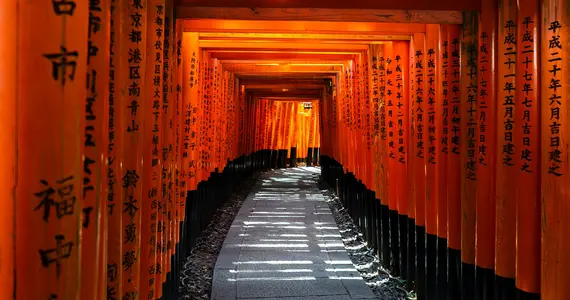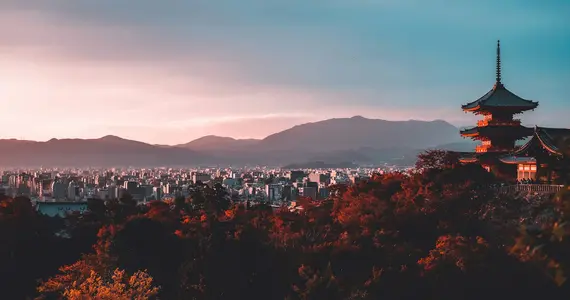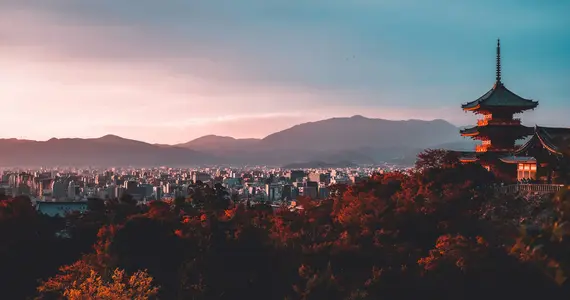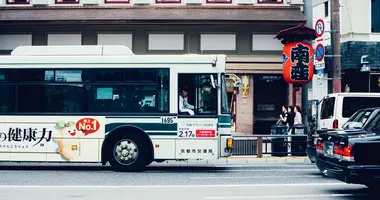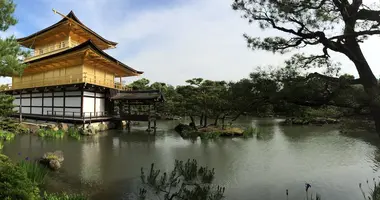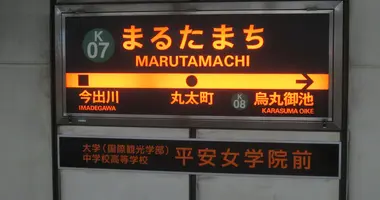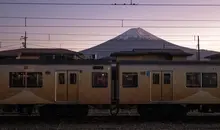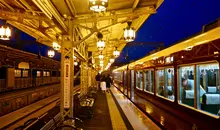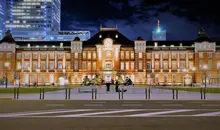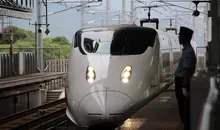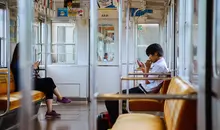How to get from Kyoto to Nara
- Published on : 27/03/2025
- by : Japan Experience
- Youtube
An easy one-day trip
Discover how to go from Kyoto to Nara and its famous temples from Kyoto. If you are not in a hurry try to take a local train and consider stopping off along the way (Tofuhku-ji, Fushimi Inari Shrine, Uji).
For most travelers to the Kansai Region, both Kyoto and Nara are essential destinations. Both cities were Japan's capital city in historic times at one point, and to this day they are bastions of culture—treasure troves for history buffs and those seeking out the most authentic of experiences when traveling through the archipelago. Fortunately, both of these destinations are very near each other via train, bus, or car, making it ideal for a great day trip! Be sure to check out both of these cities when visiting Kansai!
- Go by train with the JR Nara Line or Kintetsu Line in 35 to 45 minutes
- Go by bus in 1 to 1.5 hours
- Go by car in about 1 hour
Getting to Nara from Kyoto
By train
Train travel is a staple of getting around Japan, and it presents the most convenient and economical means of getting from Kyoto to Nara. At the center of the city of Kyoto is Kyoto Station, and getting to Nara entails departing from here via the aptly named JR Nara Line (which becomes the Yamatoji Line after Kizu Station) or the Kintetsu Kyoto Line. Both of these lines travel directly between both cities.
Via the JR Nara Line, the Miyakoji Rapid Train arrives fastest, taking around only 45 minutes to either destination. Local lines on the JR Nara Line will take around 70 minutes. The total commute costs 720 yen. Since this is a JR Line, it is fully covered by the Japan Rail Pass (often shortened to JR Pass). The JR Pass is a great option for those traveling around the country, and within the Kansai area, many destinations are easily accessible.
The Kintetsu Line has either the Kintetsu Limited Express (35 minutes total) at 1,280 yen or the Direct Express Train (45 minutes total) at 760 yen. This is not a JR-operated train line, so it cannot be ridden with the Japan Rail Pass.
By bus
There are buses that go between Kyoto Station and Nara Station. These buses are operated by a number of different companies and organizations, so their departure and arrival times vary. However, the journey typically takes around 1 hour to 1 hour 30 minutes. This is a great option for seeing the countryside scenery in Kansai. Fares are subject to change but typically start at around 900 yen for one way.
By car
For those who have access to or are renting a car in Japan, driving between Kyoto and Nara is a great option for optimal flexibility. The two cities are approximately 42 kilometers (26 miles) away from each other, and in typical traffic, the journey takes anywhere from 45 minutes to 1 hour. The most optimal route takes the expressway with toll roads; however, there are local road options that will take more time. A great benefit of driving between the cities is the option for detours and access to lesser-known destinations along the way, as well as being able to travel on one's own schedule. Be aware that for travelers coming from France, Switzerland, Germany, Belgium, and Taiwan, a translation of your driver's license from your home country will be required. Other nationalities may drive in Japan with an international driving permit.
What to see on the way from Kyoto to Nara!
Take a look at some of our favorite destinations, from Kyoto to Nara and everywhere in between! From the capital of matcha tea to ancient monasteries, the journey between the two cities is filled with as many discoveries as each of the destinations themselves!
- Tofuku-ji
One of the Kyoto’s largest Zen monastories, home to a famous five-storey pagoda and to a beautiful garden is a few minutes away from the station, head south-east.
- Fushimi Inari
The orange-lacquered torii (shrine gate) right outside the station marks the entrance of the Fushimi Inari Shrine, where thousands of other torii aligned to form a tunnel await the visitors. Visits are free and the temple is open from dawn to dusk daily. Walk through the torii ascending Mt. Inari to reach the temple observation point and have an impressive view of Kyoto’s skyline.
- Uji, Kyoto
This well-known tea-producing area (since the 13th century) is mentioned in one of Japan’s most famous novels, The Tale of Genji. Head for the river Uji-Gawa by turning left as you leave the station and then go straight to reach Uji Bridge, first built by a Buddhist priest in 646 and mentioned in the Tale of Genji. From the bridge you can reach the nearby Byodo-in Temple, with its phoenix-shaped hall and its large Buddha statue.
Discovering Nara
Nara Koen (Nara Park) has all the city ‘s popular sites. Even so, the park is big enough to accommodate thousands of guests, yet still feel spacious and quiet. Nara Park is said to be the home to divine messengers of gods—the tame deer can be seen just about everywhere in the park.
These deer roam around the park and make it very apparent that visitors are within their domain and not the other way around. Guests can feed deer with food available at the park and are famous for bowing when being fed. Interacting with such animals in this way is something very special to Nara, but it's important to note that these deer are still wild animals who must be treated with respect, and occasionally they will display signs of aggression, so be sure to abide by park rules and cultural expectations.
Also within the park, the Todai-ji is a temple complex that was conceived by Emperor Shomu in the 8th century as the seat of the authority for Buddhist Japan. It is an iconic location that is synonymous with Nara, one of the most historically significant temples throughout the island nation. Within the temple is the great Nara Daibutsu, or the Nara Giant Buddha.
How to get around Nara?
To reach the temples, you can take a bus in front of the station (East Exit). It is the Nara Kotsu Loop Bus. There are 3 types of passes: a 1-day pass, a 1-day pass wide and a 2-day pass. To reach the Heijo Palace Site, the bus departure is on the west side of the station. As previously mentioned, the Japan Rail Pass is great for getting around parts of Nara that are accessible via JR train lines. But if your itinerary isn't optimal for the JR Pass, a lot of regional passes cover the greater Kansai area and more, such as the Kansai Wide Area Pass, Kansai Pass, and the JR Kansai-Hiroshima Pass.







